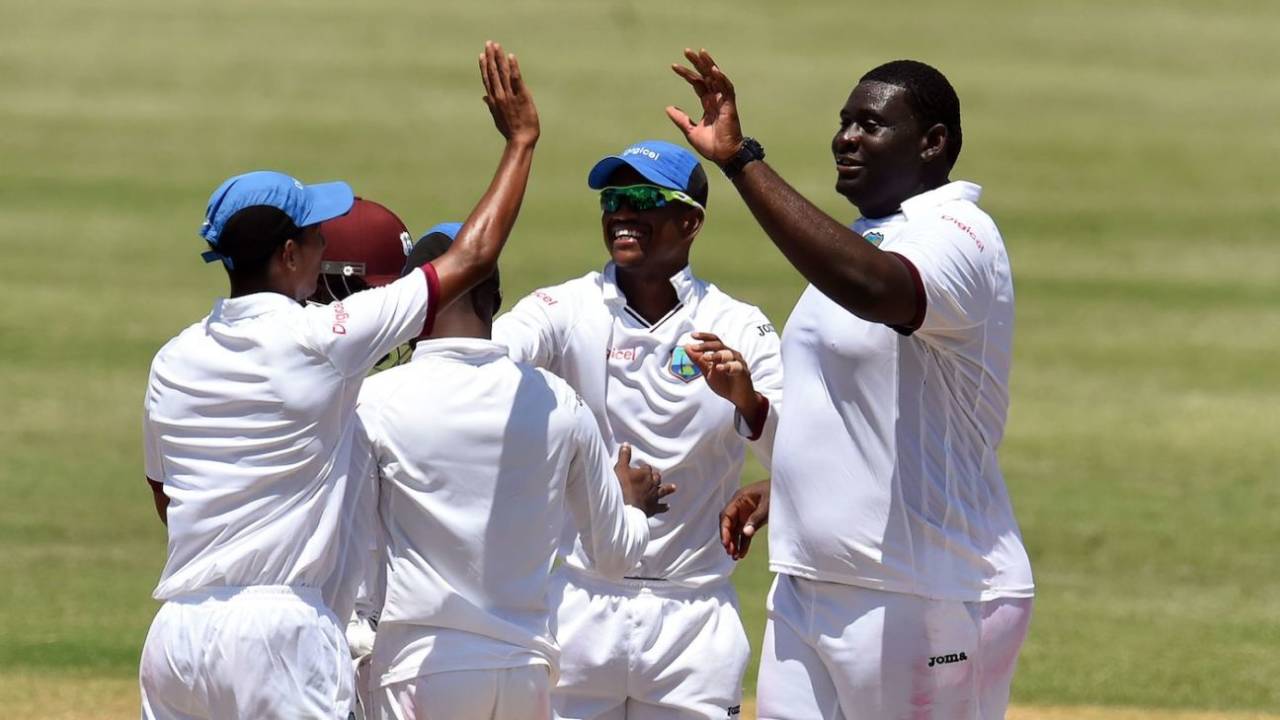What is the longest gap between World Cup matches for any player?
And is Rahkeem Cornwall set to become the heaviest Test cricketer ever?
The 6' 6" Rahkeem Cornwall, extreme right, reportedly weighs 140kg, which would make him the leading Test heavyweight currently • Getty Images
He'll certainly be close: the latest estimates put Rahkeem Cornwall's weight at around 140kgs, or 22 stone (he's also about 6' 6" tall, so among the tallest Test cricketers too). The problem is, it's not usual for players' weights to be faithfully recorded, so it's difficult to be precise.
Don Bradman didn't quite manage to average 100 against England, but he still sits comfortably on top of the pile, with 89.78. Of those who had a dozen or more innings in Ashes Tests, the Australian opener Sidney Barnes comes next with 70.50, ahead of the England pair of Herbert Sutcliffe (66.85) and Ken Barrington (63.96). After the Edgbaston Test, Steve Smith had climbed to fifth place with 60.84.
You'll probably be pleased to hear that a Sri Lankan holds this particular distinction: against India in Madras in 1982-83, Duleep Mendis hit 105 in the first innings, and followed that up with 105 in the second.

Liam Plunkett actually lies third on this particular list, a few days behind someone else who reappeared in the 2019 World Cup for the first time since 2007 - Shoaib Malik of Pakistan. Lameck Onyango of Kenya (1996 to 2007) and Carl Hooper of West Indies (1992-2003) also missed two World Cups, although the actual time gap between their matches was slightly shorter than for Shoaib and Plunkett.
Sachin Tendulkar did indeed become the only player to date to appear in 200 Tests, signing off against West Indies at home in Mumbai in November 2013.
A few people have queried the answer about only three pairs having bowled unchanged in the fourth innings of a Test, and winning. In trying to condense the question I managed to lose an important stipulation, which was that the bowlers had to have shared all ten wickets. The three shown last week are the only three of those. But there are five other instances (look at the fifth column) of a pair bowling unchanged in a final innings, without taking all ten wickets, usually because of run-outs.
Steven Lynch is the editor of the updated edition of Wisden on the Ashes
